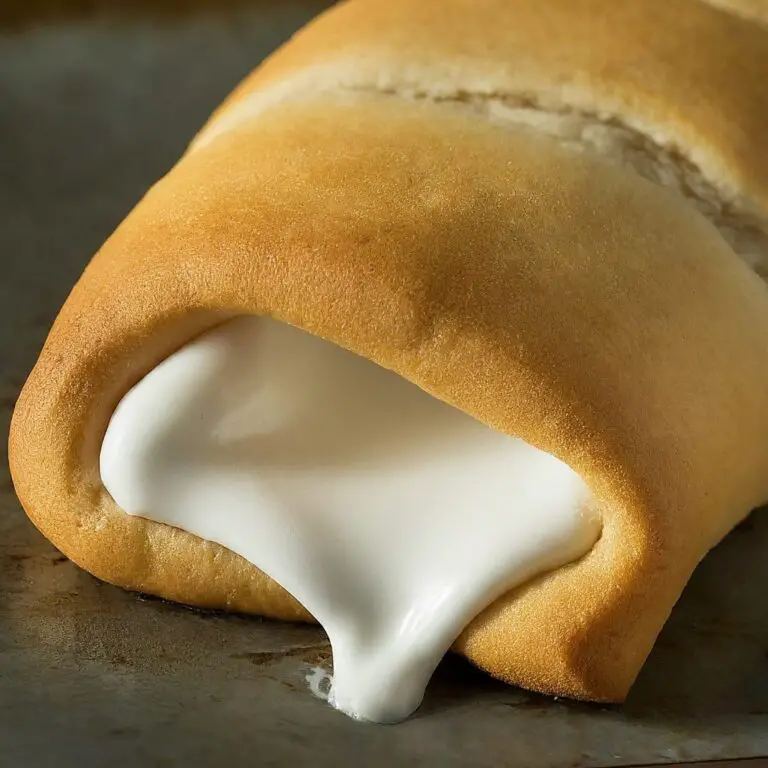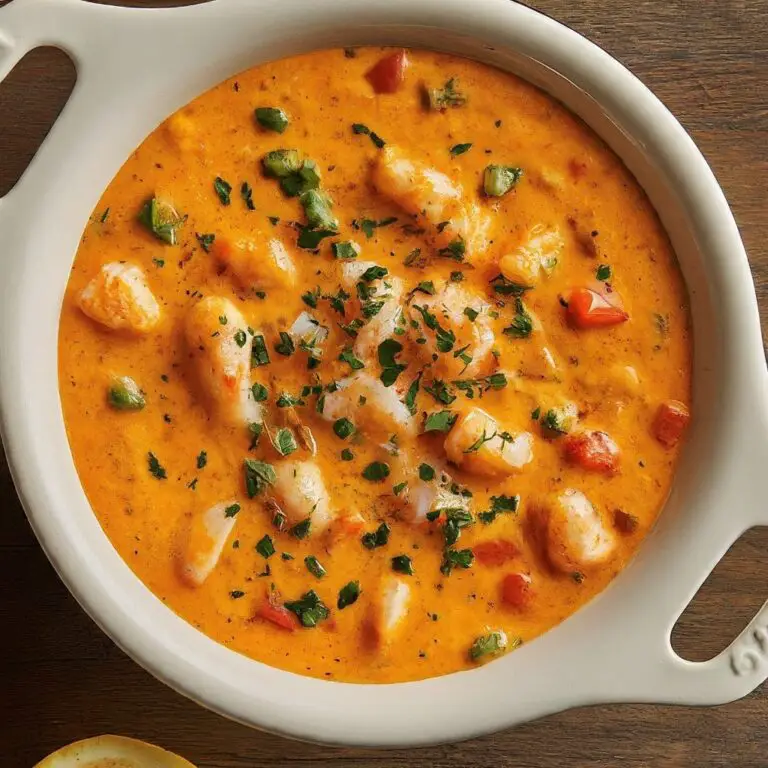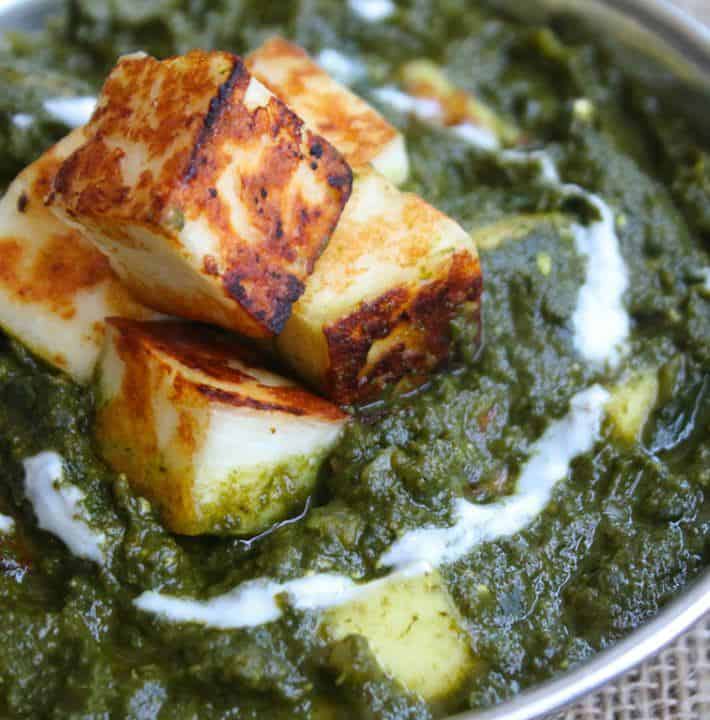
The sauces affect the quality and taste of a pizza. What to choose between pizza sauce vs marinara? How are they different from each other?
The most significant distinction between sauces is that marinara has less salt, making it feel fresher when delivered cold over pasta recipes. Pizza sauce is thicker in consistency than marinara sauce because the tomatoes are pureed instead of lightly blended.
We’ll cover all of the characteristics that set each condiment apart from the others. You’ll learn what makes them unique and which one is best for you.
Let’s take a closer look at the article below to learn more!
Differences Between Pizza Sauce Vs Marinara Sauce
Pizza sauce vs marinara may look similar. However, due to their different ingredients, you will notice differences in their flavor and consistency.
Here are some of the most outstanding characteristics that define each salsa. Let’s check to understand these recipes deeper.
1. Ingredients

The first difference between marinara and pizza sauce is the ingredient. Pizza sauce introduces extra ingredients such as onion powder, olive oil, and oregano.
These flavors give the salsa a somewhat unique taste, unlike the marinara, which is tart and acidic due to seasonings.
The marinara has olive oil, garlic, tomatoes, and basil. Meanwhile, the pizza sauces come with tomato paste.
Moreover, you can taste onion powder and oregano in the sauces for pizzas. Marinara doesn’t offer any of these ingredients.
Last but not least, marinara has less salt than its competitor, making it taste sharper and fresher, mainly when you serve it cold over spaghetti.
2. Consistency

The next difference between marinara and pizza sauce is the consistency. You can use it to distinguish these causes quickly.
Pizza sauce is often a bit richer than its competitor. The foundation of tomato paste intensifies the taste of this condiment.
The marinara comes from peeled tomatoes, whereas pizza ketchup has crushed tomatoes. As a result, you may notice that the pizza condiment has more liquid, leading to a thin consistency.
Due to the difference in tomatoes used to make the sauces, they serve different purposes.
Marinara can work as a dipping sauce or an appetizer. Meanwhile, pizza salsa is best for pizzas.
However, you can also use the sauces for different dishes. For example, many people like to use sauces for pizzas to top seafood, chicken, and pasta.
Another cause that makes the consistency of pizza paste vs marinara is the herb.
Although both have tomatoes and some popular herbs, the pepper flakes in the marinara make it thicker.
Moreover, the salt and sugar content is different from the marinara sauce vs pizza sauce.
Pizza sauces contain more sugar, allowing them to establish a strong taste of meat and cheese on top of each pizza.
3. Flavor

These sauces, marinara sauce vs pizza sauce, have different tastes based on the ingredients used to make them.
Because there are no added spices, a typical marinara sauce has a sour and acidic taste.
Spices like onion powder and olives, on the other hand, will offer it a more wonderful taste.
Sauces for pizzas also have spices such as oregano or onion powder, giving them a distinctive taste from marinara.
Tomato paste deepens and intensifies the sauce, allowing the spices’ aromas to pop out.
It’s important to note that reddish sauce isn’t available with all pizzas. You can also see those with a white sauce made of cheese, butter, and herbs.
This white condiment is interesting to try. It doesn’t come in dollops like the marinara but covers the whole dough.
Because pizza sauces have oregano and basil, they offer a more herbaceous taste. Meanwhile, the red wine vinegar with onions used to make marinara makes it more acidic.
If you prefer sweeter ketchup, go for the marinara; if you want something spicy, go for the other.
In the end, the choice between marinara sauce vs pizza sauce comes down to personal preference.
4. Cooking process
The difference between marinara and pizza sauce in the cooking process is relatively minimal due to their primary ingredients.
Both sauces need garlic, tomatoes, and basil. The critical distinction is that marinara involves peeled tomatoes, whereas its competitor employs crushed tomatoes.
Crushed tomatoes have a thicker consistency. Since there isn’t as much water in it as there is in its competitor, the taste of this sauce will be more intense.
The cooking times for these sauces are nearly identical. You will cook and thicken them in a saucepan on heat.
This cooking process takes around 15 to 20 minutes. You may add any other ingredients during that time, such as peppers, onions, or garlic.
To be more specific, let’s dig into each preparation method of both sauces.
How to make pizza sauce?
Making this condiment is a straightforward process. You may have all the ingredients in your cupboard.
The salsa does not necessitate any additional effort. Even teens can do it in a short time. Here’s how to make a simple homemade recipe:
- Pour some olive oil into a pan and add the tomato paste and pureed tomatoes.
- Ass onion powder, garlic powder, cracked pepper, sugar, oregano, fresh basil, and sugar.
- Mix those ingredients thoroughly.
- Your condiment is ready to serve.
How to make marinara sauce?
Follow the given steps here to prepare a well-balanced marinara.
- First, add two teaspoons of olive oil into a deep and wide cooking pot and cook it on medium heat.
- Add minced or diced garlic to the olive oil and cook the mixture until you notice a pink color.
- Add onions and fry.
- Add tomatoes and 1/2 cup of water to the mix.
- Then, add salt, basil, pepper, pepper flakes, and oregano to the pot.
- Reduce the heat and stir the mixture.
- Allow the paste to simmer for 30 minutes, or until fluids emerge on the top and the water has reduced by half.
- Trim the basil leaves and crush the pieces until you get the desired consistency.
- Now, you can enjoy your condiments on different dishes.
5. Nutritional content
You may want to consider the nutritional content when determining the difference between marinara and pizza sauce.
In general, the gap in calories or carbs of pizza sauce vs marinara is relatively minor. We’ll analyze the nutritional value of each of these foodstuffs based on 100 grams.
- Calories
Both sauces carry about the same calorie count. Because they contain roughly 50 calories per 100 grams, they are both low-calorie foods.
- Carbs
They both have equal carb counts; however, pizza sauce seems to have a slightly greater carb count, which is essential to consider when comparing the two.
- Fibers
Pizza sauce has somewhat more fiber than its competitor.
- Proteins
The protein content of salsa for pizzas is outstanding. Yet, the minimal gap doesn’t matter so much.
- Fats
They have identical fat content and are low fat. On the other hand, the pizza condiment has a lower fat content.
- Minerals
Compared to marinara, the standard pizza sauce comes with more variable mineral composition. Iron, calcium, copper, and magnesium are all more plentiful.
The salt concentration of sauces, on the other hand, is one of the most critical parts. Salsa for pizzas has high salt content, but its competitor is quite low in sodium.
- Vitamins
Vitamins B5, B1, A, and C are more abundant in condiments for pizzas. It also offers a higher content of vitamins E, K, B6, and B3 content.
- Effect on weight loss
Because these sauces are low in calories, they can work for weight-loss programs. They won’t add many calories to your diet, and the sharpness of taste that these sauces offer is a plus.
It’s worth noting that if the food you eat doesn’t make you happy or give you a good sense of satisfaction, your diet won’t last long.
It is critical to provide a variety of elements in the diet. However, the main emphasis should be on absorbed portions.
Comparison Table
We have gone through some critical features of pizza sauce vs marinara. Now, let’s summarize their differences by looking at this comparison table.
| Criteria | Pizza sauce | Marinara sauce |
| Ingredients | Basil, tomato paste, garlic, olive oil, salt, and sugar | Pepper, tomatoes, olive oil, sugar, garlic, and red pepper flakes |
| Consistency | Thin | Thick |
| Flavor | Herbaceous | Acidic and tart |
| Cooking process | Cook the mixture of ingredients for 15 to 20 minutes | |
| Nutritional content | Low in fats | Low in calories and carbs |
What Is Pizza Sauce?
A cook in Italy created pizzas as a treat for King Umberto. He also came up with the traditional pizza paste, which has been famous for ages.
He offered tomato-based condiments to cover the new food as soon as somebody else put mashed tomatoes on a slice of bread.
As a result, this dish showed up, and it has since become a favorite of many pizza fans all over the world.
The ingredients to prepare this recipe are pretty simple: basil, tomatoes, garlic, and olive oil. It’s a simple salsa with a few ingredients.
The simplicity of preparing is what makes it so popular. You can even use it for many other dishes.
This condiment also has numerous seasonings, such as garlic powder, oregano, or onion powder.
It also contains some oil, such as vegetables or olive oil. The sauce’s vibrant red color comes from tomato paste, which acts as a foundation.
Finally, the condiment has salt and sugar to boost the flavors. This combination produces a deep, aromatic salsa that goes nicely with pepperoni and cheese over a crispy crust.
Today’s grocery pizza sauce may have the same essential combination of tomatoes, herbs, and salt.
If necessary, you can also include other ingredients, such as crushed red pepper or garlic.
What Is Marinara Sauce?

The sauce’s history may bring you back to the appearance of Italy’s first tomatoes in Europe in the 16th century.
The term “Marinara” comes from the Italian word, which means “sailor.” According to folklore, this salsa was the idea of Maria, a female caterer who cooked up a fast meal for hungry sailors.
Since then, it has gained prominence in their own country and worldwide, particularly among Americans. They welcomed this meal with open arms as an American version of food culture.
Salsa has a lengthy and glorious history back to the 17th century. Initially envisioned for use with seafood, this condiment is now frequently coming with pizza and pasta.
Tomatoes, garlic, olive oil, salt, and pepper are the main ingredients of marinara.
The ingredients for this condiment are pretty similar to those of pizza salsa, including pepper, tomatoes, olive oil, sugar, and garlic.
However, marinara has onions while the traditional pizza condiment doesn’t. It also contains red pepper flakes for a spicy flavor.
Olive oil is also an essential element in this condiment, as it contributes to its flavor depth.
Read more: Can You Use Marinara Sauce For Pizza ?
Pizza Sauce Vs Marinara: What Should You Choose?
The battle between pizza sauce vs marinara will never end. Some people tend to prefer one over the other based on their mood and what their cupboard has on that day.
The biggest difference between marinara and pizza sauce is that the latter sauce contains many spices.
This condiment is rich in garlic and herbs, giving it a richer taste for pizzas and other Italian cuisines like spaghetti.
Aside from tomatoes and basil, marinara usually has no other taste. If you’re going to go for this condiment, add some spices or veggies to enhance its flavor.
Here are some recommendations that can bring the best of dishes. We hope you can determine the better between pizza sauce vs marinara in these cases.
For pizza
One of the very first things to think about when choosing between pizza sauce vs marinara to top your pizzas is whether you want a crispy, thin crust or a fluffy, thick one.
Use marinara sauce for thicker pizzas since its thick texture can soak through each layer and maintain all of the cheesy pleasure in place.
Because the salsa for pizzas is thinner, it works much better on more delicate doughs, guaranteeing nothing leaks while baking at extreme heat.
Moreover, marinara contains large pieces of tomatoes. Hence, it is a preferred solution if you want coarsely diced toppings on your pizzas.
Pizza sauce is smoother and sloppier, allowing it to stand up to more extensive chopped toppings without leaving the pie sloppy.
For pasta
Consider some factors first before deciding which is better between marinara sauce and pizza sauce for your paste.
Think about the taste profile you want: spicy and acidic, like red pizzas are, or creamy and flavorful, as certain marinara sauces are.
Marinara sauce, which can contain larger bits of veggies without becoming soggy, should be your way to go if you like something similar to arrabbiata ketchup.
When fettuccine or penne comes, pizza paste is more common since it has a softer consistency that fits these types of spaghetti.
For side dishes
When you order something such as fried mozzarella pieces at your local Italian restaurant, you may see dipping sauces coming with your dishes.
If you often use marinara for dipping, you’ll find that pizza paste tastes odd, and vice versa.
Even if you’re not used to having snacks with either, they’re both delicious. Hence, go ahead and try them all.
These sauces are wonderful for dipping a huge plate of creamy garlic bread. However, for a regular green salad, marinara should be the way to go.
Pizza condiment offers a little more punch to it, making it perfect for topping Italian salads with pepperoni or grilled veggies.
Are These Sauces Interchangeable?
Because of the similar ingredients between pizza sauce vs marinara, you can interchangeably use these two sauces. Yet, one shines brighter than the other.
Pizza paste may work as a condiment or a spaghetti topping and taste delicious.
However, marinara may not be the most fantastic choice for a pizza topping due to its texture.
If you want to use the marinara with a pizza crust, firm it up with tomato purees.
Frequently Asked Questions
Italian food lovers have been wondering about the difference between marinara and pizza sauce. Here are some of their frequently asked questions.
1. Is marinara sauce for pasta or pizzas?
Yes, this condiment can act as the foundation for your pies. Just be sure you season it with some spices before enjoying it to give it that distinctive taste.
If the condiment is too runny, you may thicken it with a bit of tomato paste.
Pizza or spaghetti day is always a fantastic idea. You can prepare a delicious supper that everybody will appreciate with these simple recipes.
These meals are easy enough for anybody to make, whether you’re a newbie chef or have cooked for years.
2. What is the difference between spaghetti sauce and pizza sauce?
The significant difference between these sauces is that spaghetti ketchup is often a red salsa based on tomatoes. Yet, the other is thicker and has Italian seasonings.
As a result, spaghetti ketchup is preferable for pasta recipes, but pizza sauce is ideal for pizzas, strombolis, and calzones.
3. Can you make pizza using spaghetti sauce?
You may use pasta paste for pizzas if you run out of the traditional paste. Here is how to do it properly:
Drain any extra water from the salsa by straining it.
Then, use a food processor or high-powered blender to thicken and smooth the salsa.
Allow it to run a couple more times to soften it while also focusing on the texture.
Season the salsa with salt and pepper if needed. You may need to flavor it with any other spices you like.
Stir the mixture one more, then filter it to remove any remaining water.
This video shows you more interesting tips for this task.
4. Is marinara sauce suitable for pizzas?
Yes. However, this condiment is best for pasta. If you want to serve it with pizza, make sure you have thickened it beforehand.
5. Can you use spaghetti sauce as a pizza topping?
Yes, with a few adjustments, spaghetti condiments may replace traditional salsa for pizzas. If you want a thicker salsa, remove the surplus water, and simmer it more.
If your spaghetti sauce has huge chunks, mix it or run it in a food processor to flatten it out.
Conclusion
The two sauces are somehow similar yet distinctive enough to determine which works for particular food. The amount of tomato paste affects what dishes you should serve it with.
Keep this info on hand as a guideline for preparing Italian cuisine next time. Pizza sauce vs marinara: which one is your favorite? Please share with us!
We hope this post is helpful for any pasta or pizza fans seeking new ways to pair their sauces with other dishes. Thank you for reading!






